BMW F 800 GS – Click above for high-res image gallery
Since its introduction back in 2004, the R 1200 GS has been BMW's best selling motorcycle, and for good reason. Time and again, the big bike has proven itself surprisingly capable of traversing the gnarliest of terrain in the hands of riders all around the world. The German motorcycle maker invented the adventure touring category when it introduced the R 80 G/S way back in 1980, and since then, almost all of BMW's GS series of bikes have featured the brand's signature twin-cylinder horizontally-opposed boxer engine.
Lately, though, a new contender from BMW's own paddocks has entered the fray using the brand's more recent 800cc parallel-twin engine design, and we wanted to see how it compared to the R 1200 GS that we reviewed back in February. To that end, we jumped at the chance to ride the new F 800 GS at the RawHyde Adventures Rider Challenge in Castaic, California. Throughout the event, we also had access to the 1200, allowing us to ride the two adventure bikes back-to-back over similar terrain. Wanna know how they compare? Read on.
Photos Copyright ©2009 Jeremy Korzeniewski / Weblogs, Inc.
As is the case with the rest of BMW's line of GS bikes, the F 800 has a very purposeful look. Up front, you'll find the signature bug-eye headlamps and beak-like upper fender, which works in tandem with another lower fender that sits far enough from the front tire to keep mud and debris from packing up. The rest of the bodywork is minimal, leaving the powerplant exposed and lending the bike some added Mad Max-style appeal.
Ahead of the surprisingly comfortable seat sits a plastic airbox with dual high-mounted ducts that supposedly allow the bike to wade through waist-level water, though our desert test conditions didn't exactly allow us to put BMW's claim to the test. A 4.2-gallon fuel tank sits beneath the rider to help keep weight down and lower the bike's center of gravity.
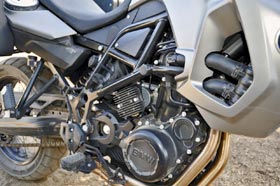
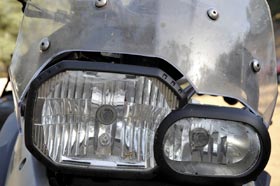
Unlike the telelever front end featured on the R 1200 GS, the 800's 21-inch front rim is held by a conventional set of Marzocchi-sourced 45 mm upside-down forks with nine inches of travel. Out back sits a 17-inch rear rim with a 150 mm tire held in place by a dual-sided cast aluminum swingarm. Propping up that rear end is a single rear shock that offers 8.5 inches of movement and is adjustable for both pre-load and rebound damping. Despite the lack of BMW's Electronic Suspension Adjustment, we were completely satisfied with the stock configuration of both the front and rear suspenders, though we never rode with a passenger or lots of luggage.
Holding it all together is a tubular steel space frame that clamps down on the engine as a stressed member. That powerplant is canted forward by just 8.3 degrees, which is considerably less than the 30-degree tilt of the rest of the F 800 line – a change that was required to allow for the long-travel front suspension arrangement. Final drive is by chain, again a major departure for BMW, which usually relies on its proprietary Paralaver shaft-drive.
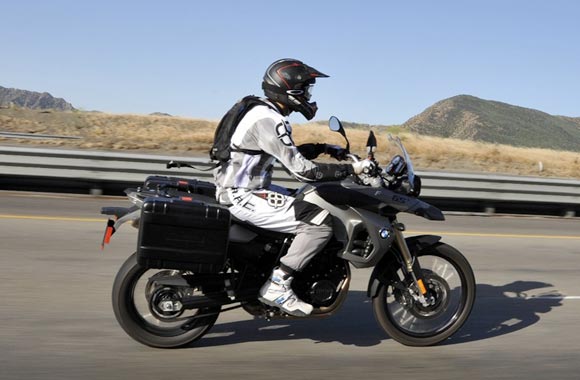
With a seat height of 34.6 inches, the F 800 GS isn't always the easiest steed in the world to throw a leg over, but once there, the narrow profile afforded by its liquid-cooled twin-cylinder engine means that it's not all that difficult to find your footing down below. With your hind end firmly in the saddle, everything is extremely comfortable thanks to a posture that puts the bars and footpegs within easy reach. Those pegs are positioned perfectly so that the rider can either sit down or stand up, which is of utmost importance for a bike meant to traverse the mud, ruts and water Mother Nature flings its way.
A flick of the starter button located on the right hand-grip brings the 85-horsepower mill to life, and it quickly settles into a calm idle. When compared to the 1200cc 105-hp Boxer engine from the 800's bigger brother, the parallel-twin engine revs much more quickly and responds (almost too) immediately to the flick of a wrist just off idle when riding in loose conditions. Otherwise, the powerplant was a real gem that has no problem getting the mid-size bike up to speed in short order. In fact, a few roll-on tests proved that it's just as quick as the larger bike, especially at the upper end of the tach.
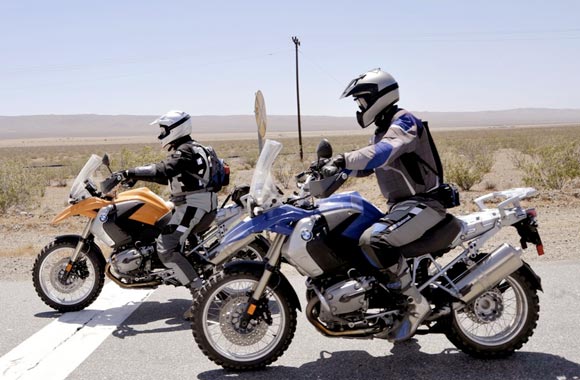
Shift action from the six-speed gearbox was superb, and probably a bit better than the slightly notchy unit used in the 1200. We did note that there was a bit less room for our size-13s between the peg and the shift lever on the downsized machine, though that's likely an easy fix for owners with similarly large Flintstone feet. That minor niggle aside, our time on the F 800 GS was highly entertaining. On the long, flat stretches of highway between our off-road destinations, the 800 GS may not be quite as relaxed as its older sibling at high rates of speed, but we actually found the stock windscreen more effective on the smaller bike. The powerplant was very smooth and we didn't note any undue vibration from the grips or pegs.
As we found out in our initial review of BMW's largest GS, there's nearly nothing that can stop the 1200cc bike in its tracks... except a rider that's a bit wary of throwing a bike this massive into especially harrowing circumstances. We thought this might be where the 800 might have an advantage, as its 456 pounds (wet weight with a full tank of fuel) are less intimidating than the 1200's 505 pounds of heft. As it turns out, we were right, especially when the terra was somewhat less than firma.
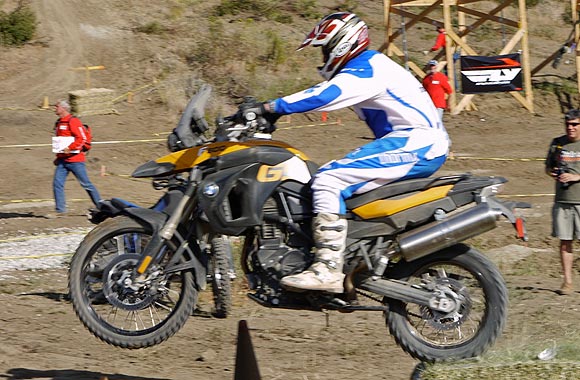
Because of its lighter weight and less intimidating dimensions, we felt more confident throwing the 800 into tricky situations than the 1200, and once there, we were more likely to come out the other end without leaving a GS-sized divot in the ground. Of course, when the inevitable does happen and you hit the deck, the 800 is a bit easier to lift back up and remount. When approaching particularly large obstacles, it was easy to loft the front wheel with either a well-planned twist of the right wrist or a quick tug at the clutch lever. ABS brakes with an all-important off switch are optional and, in our opinion, well worth the $900 asking price.
All of this off-road proficiency came in handy during our test, which was performed at the RawHyde Adventure Rider Challenge, BMW's Official Enduro School in the Western United States. Our route stretched for over 390 miles and traversed everything from long, straight highway stretches to sportbike-friendly twisties to unpaved dirt roads near the small town of Randsburg, California (population 77 as of the year 2000) in the Mojave Desert. These diverse riding conditions served to drive home the point that BMW's GS line of bikes are the Swiss Army Knives of motorcycling, and that pretty much sums up our opinion of this particular bike.
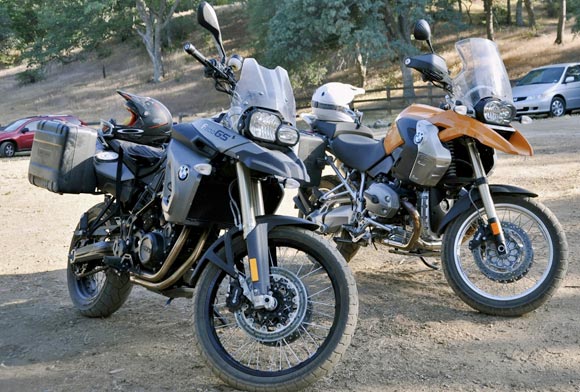
While it's clear after riding the R 1200 GS and F 800 GS back-to-back that the bigger bike is a premium machine that deserves of all the accolades it has received, we actually had more fun on the 800. Furthermore, pricing for the smaller GS starts at $10,995 – nearly $4,000 less than the 1200 – and comes in at $12,500 loaded up with the aforementioned ABS brakes, heated handgrips and onboard computer. As far as we're concerned, that's not bad for a bike that's equally as comfortable on the highway, in the dirt or nearly anything in between. By our tape-measure, there's a solid case to be made that the F 800 GS may be the ideal mount for a garage with room for only one motorcycle.
Photos Copyright ©2009 Jeremy Korzeniewski / Weblogs, Inc.
Our travel, lodging and test bikes for this event were provided by the manufacturer.

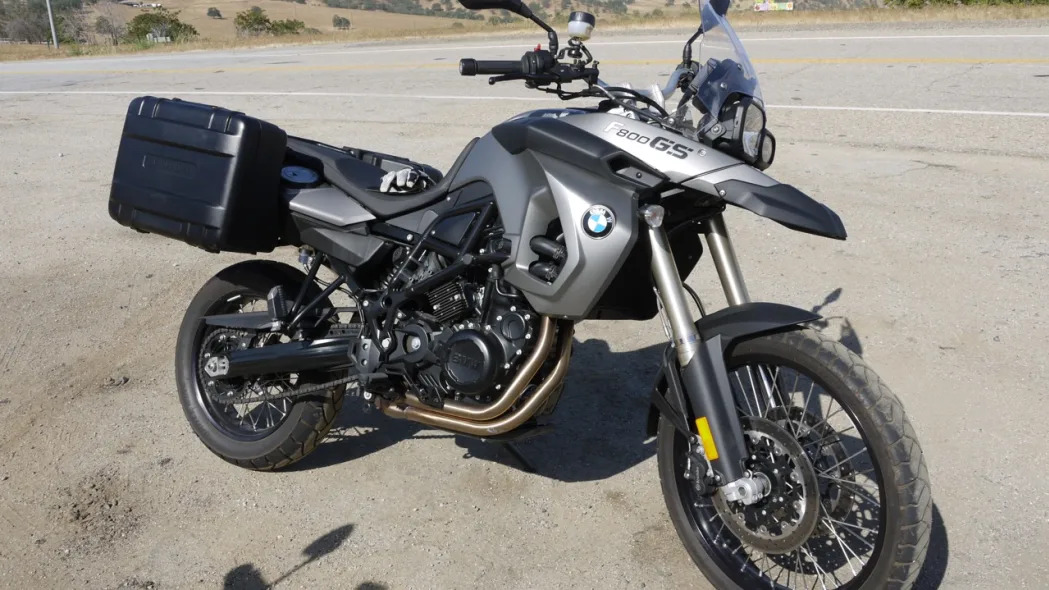

Sign in to post
Please sign in to leave a comment.
Continue